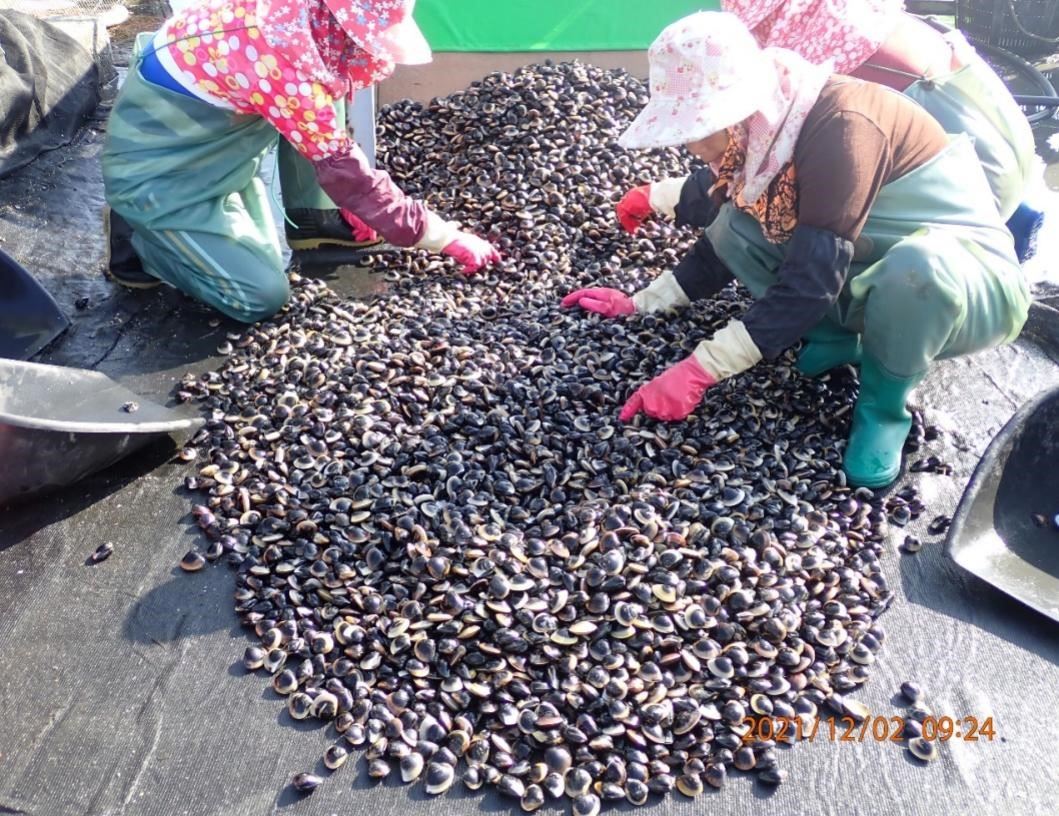News
Strengthening Water Quality Management and Timely Adjusting Managerial Operations for Clam Breeding before Summer
- PostDate:2022-09-01
In order to cope with the impact of climate change on clam breeding, the Fisheries Research Institute has used an intelligent water quality monitoring system for the long-term monitoring of water quality parameters and microclimate conditions of ponds. With the addition of field management operations, the Institute has successfully increased the actual economic income of farmers through early-warning prevention and control methods. According to the monitoring data, the period of high temperature and rainfall in summer is the biggest production difficulty for clam breeding nowadays. The Fisheries Research Institute calls for the timely addition of probiotics to enhance the decomposition and metabolism of organic matters at the bottom of ponds before the high-temperature period in summer; in addition, after heavy rainfall or with a large diurnal temperature difference, clams are prone to collective ejaculation and ovulation, thus, initial subsequent management operations should focus on stabilizing water quality to help clams withstand environmental stress.
According to the Fisheries Research Institute, clams are a kind of filter feeder with the characteristic of hiding under the sand. To ensure stable production, it is necessary to create good water quality and substrate environments, maintain a balance between algae and bacteria, and provide adequate food sources. It takes 10 to 12 months for the cultured clams to grow to market size. In winter, due to the northeast monsoon, there is sufficient dissolved oxygen in ponds for clams to grow steadily. However, due to the growth and change of algae over 6 months during winter and spring, the amount of organic matter deposition at the bottom of ponds is increased, which results in an increase in ammonia nitrogen. Therefore, it is suggested that probiotics should be added successively to strengthen the decomposition and metabolism of organic matter at the bottom of ponds when the temperature begins to rise after the vernal equinox.
In addition, during the period of high water temperature in summer, as both the beneficial and harmful bacteria in ponds proliferate rapidly, and because of the long photoperiod, it is easy to cause excessive reproduction of algae, which is not conducive to the growth of clams. At this time, while the physiological metabolism and energy demand of clams are accelerated, it is still not suitable to overfeed them. However, it is necessary to closely observe the absorption of algae and the growth state of clams, in order to achieve a good breeding management mode for the bacteria count, algae, and water quality control.
The Fisheries Research Institute pointed out that in recent years, due to the impact of climate change, the intensity and frequency of seasonal rainfall have increased, and when the water temperature changes, the clams in the breeding period will often produce a large number of sperm and eggs, which results in their death due to weakness. In addition, as most of the sperm and eggs discharged at this time are immature, most of them cannot be fertilized smoothly and die. Accordingly, the increased deposition of organic matter in pools may easily cause the bottom of the pool to rapidly deteriorate; therefore, when ejaculation and ovulation occur, the Fisheries Research Institute should pay special attention to the management of water quality.
In 2021, the Fisheries Research Institute began to set up an intelligent water quality monitoring system for non-governmental demonstration farmers in the Changhua and Yunlin areas, which collects the monitoring data of the breeding environment and provides scientific analysis data for farmers’ reference. At the same time, it also helps them to adjust and establish an appropriate breeding management mode. In the future, the Institute will continue to carry out relevant monitoring and counseling work to improve the clam breeding rate and achieve the goal of stable mass production.

Strengthen water quality management and timely adjust management operations in summer to achieve results in breeding efficiency with half the effort

Grading of the harvested clams after the challenge of high water temperatures in summer


